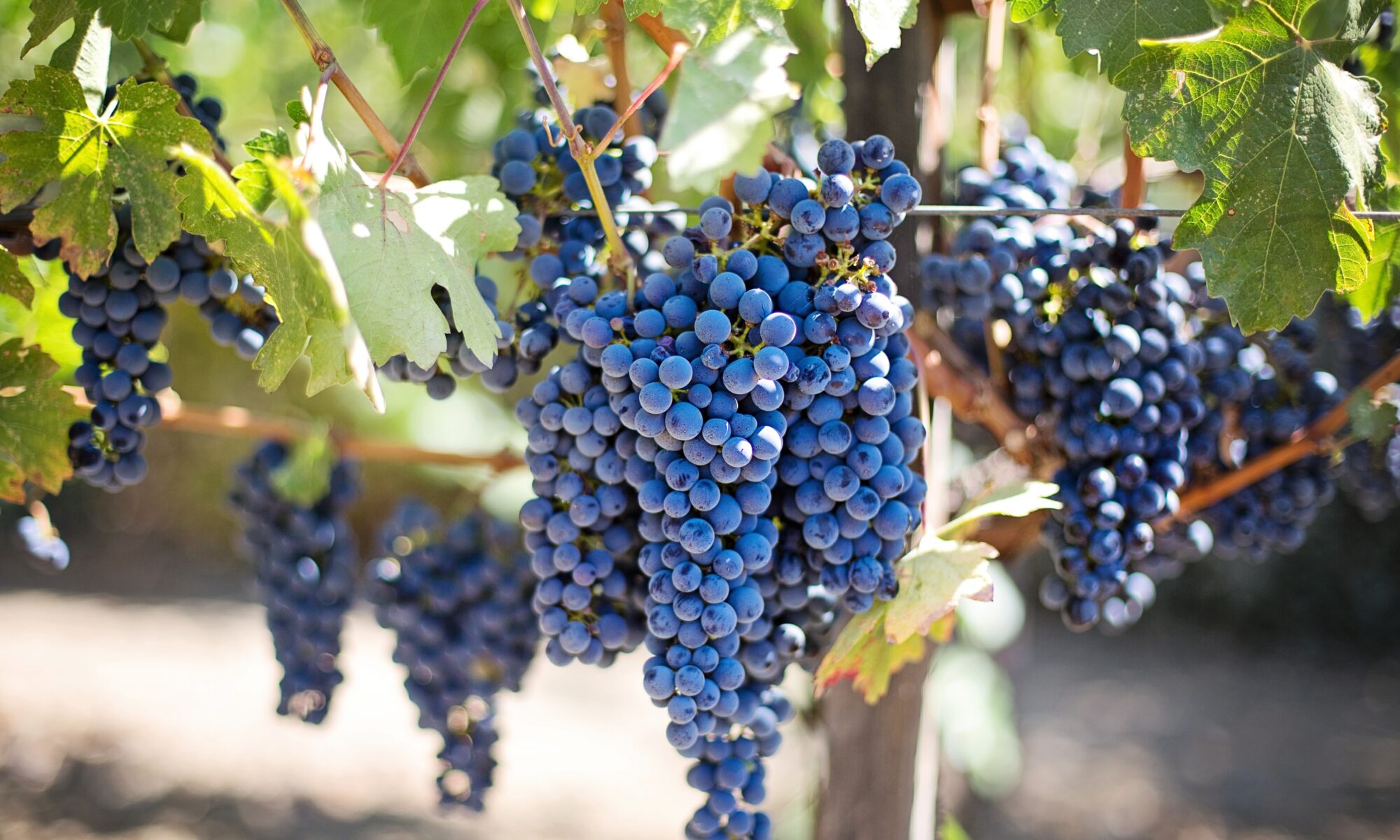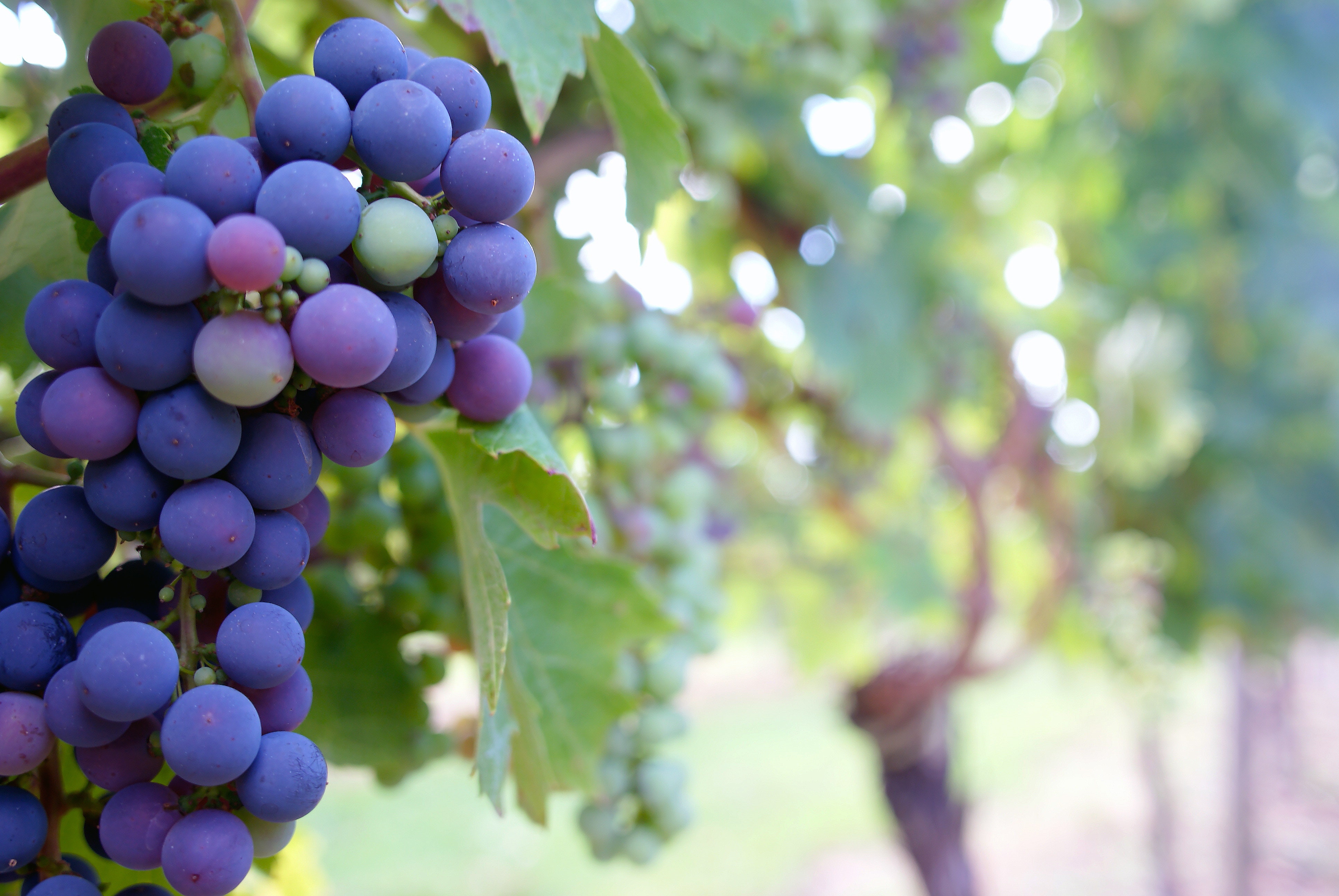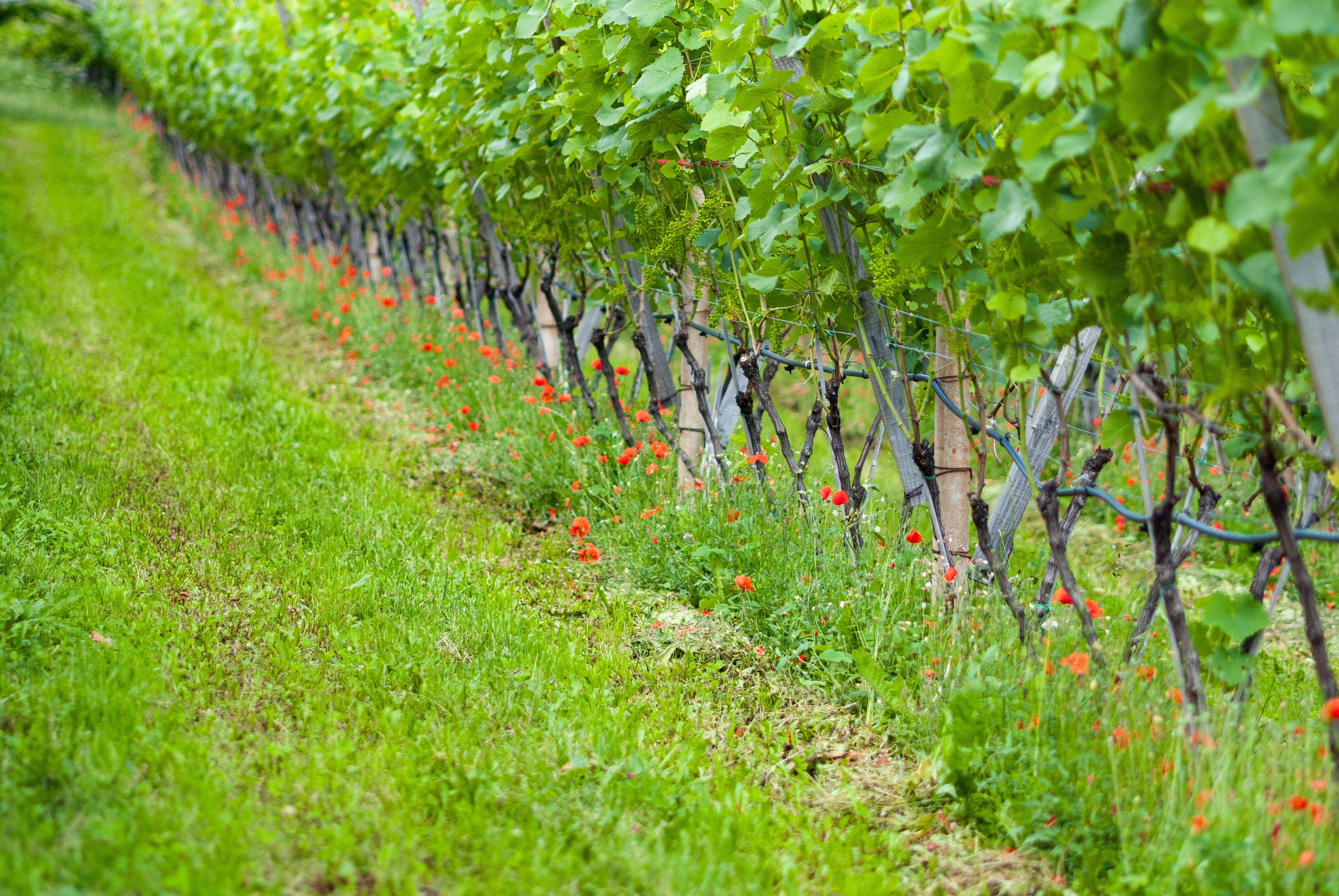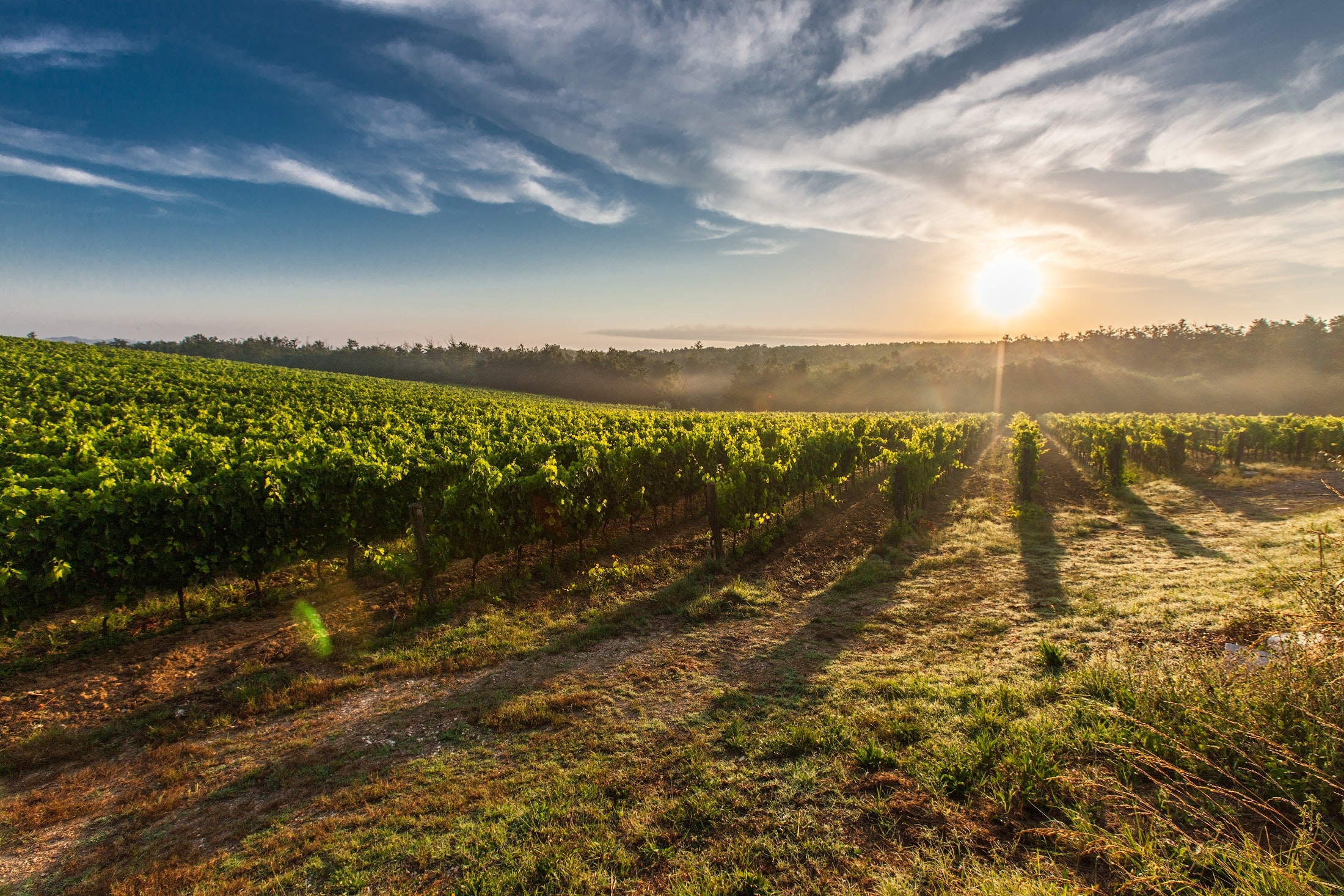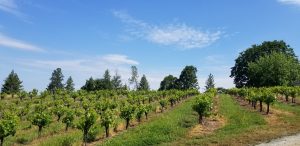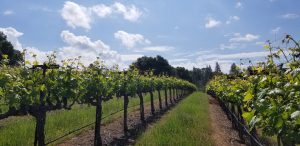Welcome to the third installment of our Vineyard Terminology series: Vine Maintenance!
Once training and pruning systems are established, the vine must be kept clean to ensure only the desired amount and quality of fruit is produced.
Shoot thinning:
Grape vines are very tenacious in their growth and will attempt to grow from all parts of the vine, not just the areas you have selected during pruning. Shoot thinning is the process of removing green growth from parts of the vine that were not intended for fruit production, such as secondary shoots (a shoot that has emerged from a bud that was not seen or removed during pruning) or shoots on the undersides of cordons/canes. Shoot thinning is best done when the new growth is only about 6 inches long, as the unwanted material can be broken off with bare hands, as opposed to clippers or a knife. Some varieties require more thinning than others, and may even need multiple passes as the growing season progresses in order to keep the vine clean and balanced.
Suckering:
Suckers are shoots that have grown from either the trunk or under the soil level. These shoots are problematic since they do not produce much fruit (if any), they suck (hence the name sucker) resources from the main vascular system of the vine, and they make the vine look unkempt and messy. Suckering should take place either in conjunction with or very soon after shoot thinning, in order to allocate the most of the vines resources to leaf and grape growth in the fruiting zones.
Crop thinning:
Most winemakers and vineyard owners want to make sure that their vines are producing only the best quality fruit possible, so sometimes clusters must be removed to concentrate the flavors and resources in the remaining fruit. Crop thinning can be accomplished by selective shoot thinning, or by simply clipping unwanted clusters from the vine, though the latter method is extremely time consuming. The amount of fruit that a particular vine can handle varies greatly with varietal, location, rootstock, soil, training system, and climate. Some varieties, such as Zinfandel, will produce extremely large amounts of fruit (upwards of 20 tons per acre), if left to their own devices. While this level of production is perfect for commercial table-wine operations, premium labels often aim for between 2 and 3 tons of grapes per acre. In order to achieve this level or production, restrictive pruning and training systems are coupled with crop thinning early in the season.
